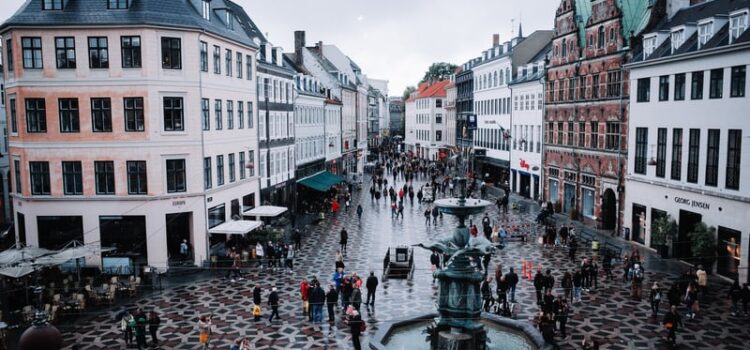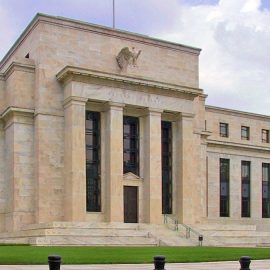

This article is an excerpt from the Shortform book guide to "A Promised Land" by Barack Obama. Shortform has the world's best summaries and analyses of books you should be reading.
Like this article? Sign up for a free trial here .
What did Obama do in Copenhagen? How did Obama’s Copenhagen trip change how the world thinks about climate change?
For President Obama, the Copenhagen Summit was chance to establish himself as a world leader on climate change. At the summit, world leaders took initiative to create new climate policies.
Read more about Obama, Copenhagen, and the summit on climate change.
Obama and the Copenhagen Summit
While working to pass a climate change bill through Congress, Obama was also preparing to make a trip to Copenhagen to attend the 2009 United Nations Climate Change Conference in December. The purpose of the conference was to bring the international community together to reach a comprehensive climate change agreement, including global emissions targets.
Obama hadn’t initially wanted to make the trip, seeing it as having little likelihood of succeeding or of any substantial agreement being reached at the summit. There would be near-certain Republican opposition to any treaty that might be drafted at Copenhagen by Obama, as treaties required two-thirds of the Senate to ratify, effectively giving the GOP veto power. On top of that, rapidly developing countries like India and China were unenthusiastic about curbing their emissions without reciprocal action from the West.
Nevertheless, Obama was persuaded to attend by UN Secretary-General Ban Ki-moon, who believed that Obama’s presence and moral leadership could make a meaningful difference. He recognized that global warming could not be tackled without massive international coordination, and reluctantly agreed to make the trip to Denmark.
Upon arrival, Obama found his deepest concerns quickly confirmed. The conference was disorganized and chaotic, unlike any other international summit he’d ever attended before. Little preparatory work seemed to have been done, and the leaders in attendance could not find a consensus on anything.
Obama and the American delegation made it clear that any agreement needed to have firm emissions commitments from developing economies like China and India. With their growing wealth, rising living standards, and emerging middle classes, these nations’ share of total global emissions was sure to rise in the coming decades. Any emissions targets needed to take account of that fact.
Given the existing political constraints, he would not be able to sell an agreement that imposed stringent requirements on the U.S. while letting foreign emitters off the hook—especially during a recession.
Chinese Opposition to a Climate Change Agreement
It became clear to the Americans and Europeans that the Chinese delegation, in particular, was a problem. They refused to meet or discuss the issue in any substantive way. Unenthusiastic about putting the brakes on their rapid industrialization—which had made the once-impoverished nation a rising superpower and brought hundreds of millions of people out of extreme poverty—the Chinese saw political benefit in letting the Copenhagen conference fail and blaming it on the U.S.
The aloofness of the Chinese delegation, led by Premier Wen Jiabao, took on a comic aspect when they literally dodged Obama to hide in a conference room. There, they rallied other developing nations like India and South Africa to oppose any deal.
Obama believed that, to some extent, their opposition to a climate change agreement was understandable. Since the dawn of the Industrial Revolution in the early 19th century, the vast majority of pollution had been done by Western nations like Great Britain and the U.S. It seemed unfair that just at the moment when China was emerging as an industrial power that they should suddenly be asked to sacrifice their economic development to help solve a problem that they hadn’t created.
Obama understood these arguments, but he also understood that the risk of global warming to human civilization was simply too great to indulge them. Accordingly, he and Secretary of State Hillary Clinton showed up unannounced at the Chinese conference room (having to unceremoniously squeeze past security) to speak to Wen and the other leaders, just hours before the president had to get on a plane back to the U.S.
There, they explained that the political limitations in the U.S. would simply not permit a climate change agreement that didn’t impose restrictions on emissions in the developing world. Moreover, Obama and Clinton made it clear that the European Union would not go along with any such agreement either. Convinced by Obama and Clinton’s personal appeals, the Chinese, Europeans, and Americans were able to hammer out an interim agreement in a matter of a few hours.
Obama and the Copenhagen Accord
The resulting Copenhagen Accord consisted of mostly voluntary emissions targets for 2020 from the signatory countries. It was a non-binding treaty, and thus would not have to be submitted to the U.S. Senate for approval (where it would almost certainly have fallen short).
Obama was pleased that it put the U.S. and the world on a path to action on climate change. But he also knew that as a non-binding agreement, it could easily be torn up by the next Republican administration. It was, at best, a stopgap measure for what was truly an existential problem. And Obama was troubled by the fact that even this mild measure had required such enormous political effort.

———End of Preview———
Like what you just read? Read the rest of the world's best book summary and analysis of Barack Obama's "A Promised Land" at Shortform .
Here's what you'll find in our full A Promised Land summary :
- How Barack Obama went from relative obscurity to the first Black president
- What principles guided his political leadership style
- Why Obama retained an unshakable faith in the potential and promise of America






